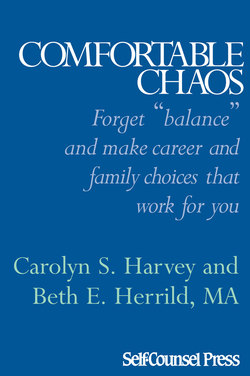Читать книгу Comfortable Chaos - Carolyn Harvey & Beth Herrild - Страница 33
На сайте Литреса книга снята с продажи.
Figure 3: What Paula Can Control
ОглавлениеShe is not operating in either circle, but there are some strategies she could try that are in the “can” circle. However, because of her aversion to structure, she hasn’t wanted to try them and therefore they remain in her “can” circle where they are ineffective without the desire to act.
By realizing that suggestions such as creating a productive physical environment for studying, increasing time for homework by reducing other activities, and implementing a homework routine would help her reach her goal, Paula may be able to move these suggestions to the “want and can” area. Once she is in the WaC area she will be able to end her homework headaches.
Are there items in your right-hand circle that are not in your “want and can” area? Maybe another priority or your style preference is causing you to not “want” to take some action that will improve a particular problem. This may be perfectly okay as long as you are cognizant of the fact. You can’t force yourself to want to do something unless you see the payoff and are willing to alter your behavior. In Paula’s case, the homework frustration had gone on for so long that she was willing to adjust her style preference in order to end the battles and get everyone to bed on time. Only you can control what is a “want” for you. But remember the powerful combination of “want and can” if you truly are seeking change. In Exercise 4, give some thought to one of your most difficult challenges and see if you are truly out of “WaC.”
By consciously choosing to operate in your WaC area, you are building up another defense against the corporate beast. Your efforts are now concentrated both where you believe they are important and where they can truly make a difference. And you now have energy left over for nurturing your desire for a more satisfying life.
